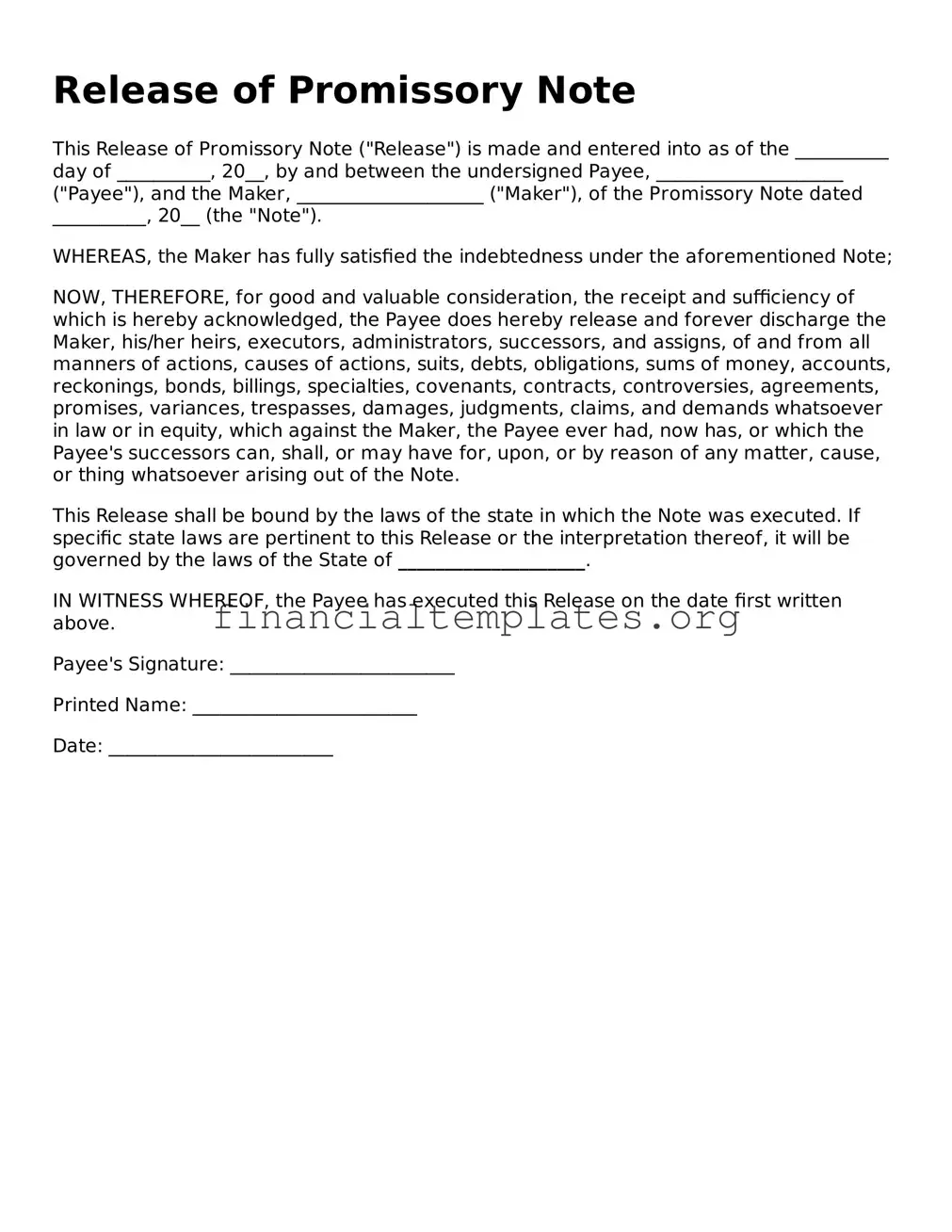Release of Promissory Note
This Release of Promissory Note ("Release") is made and entered into as of the __________ day of __________, 20__, by and between the undersigned Payee, ____________________ ("Payee"), and the Maker, ____________________ ("Maker"), of the Promissory Note dated __________, 20__ (the "Note").
WHEREAS, the Maker has fully satisfied the indebtedness under the aforementioned Note;
NOW, THEREFORE, for good and valuable consideration, the receipt and sufficiency of which is hereby acknowledged, the Payee does hereby release and forever discharge the Maker, his/her heirs, executors, administrators, successors, and assigns, of and from all manners of actions, causes of actions, suits, debts, obligations, sums of money, accounts, reckonings, bonds, billings, specialties, covenants, contracts, controversies, agreements, promises, variances, trespasses, damages, judgments, claims, and demands whatsoever in law or in equity, which against the Maker, the Payee ever had, now has, or which the Payee's successors can, shall, or may have for, upon, or by reason of any matter, cause, or thing whatsoever arising out of the Note.
This Release shall be bound by the laws of the state in which the Note was executed. If specific state laws are pertinent to this Release or the interpretation thereof, it will be governed by the laws of the State of ____________________.
IN WITNESS WHEREOF, the Payee has executed this Release on the date first written above.
Payee's Signature: ________________________
Printed Name: ________________________
Date: ________________________
